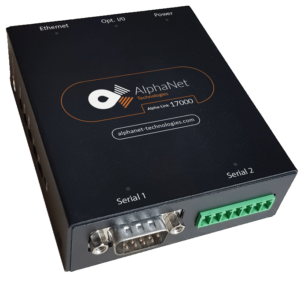Introduction
If you’re navigating the world of industrial automation and control systems, chances are you’ve stumbled upon the term Modbus TCP Gateway. But what exactly is it, and how can you make efficient use of it? This guide aims to answer these questions and more.
What is a Modbus TCP Gateway
In simple terms, a Modbus TCP Gateway acts as a translator between different types of Modbus devices. It enables these devices to communicate with each other, even if they use different Modbus protocols, like Modbus RTU or Modbus ASCII.
Setting up a Modbus TCP Gateway
So, how do we get started with a Modbus TCP Gateway?
Choosing the Right Modbus TCP Gateway
Before anything else, you need to select the right gateway that suits your needs. Consider factors like the types of devices you’ll be connecting, the environment in which you’ll use it, and your budget.
Installation Steps
Connecting Devices
First, connect your Modbus devices to the gateway. These could include PLCs, sensors, or other Modbus-enabled devices. The connection process may differ depending on the specific devices you’re working with.
Configuring the Gateway
Next, configure the gateway to allow communication between your devices. This usually involves setting up IP addresses, port numbers, and baud rates. Most gateways come with a user interface that simplifies this process.
How to Use a Modbus TCP Gateway
Now that we’ve set up our Modbus TCP Gateway, how do we use it?
Understanding Modbus Registers
Before you can effectively use the gateway, it’s important to understand Modbus registers. These are storage locations where data is held.
Types of Registers
There are two primary types of registers in Modbus protocol: Holding Registers and Input Registers. Holding Registers are read-write, while Input Registers are read-only.
Accessing Registers
To access these registers, you’ll need to send specific Modbus function codes from your control device. These codes indicate whether you want to read from or write to the register.
Reading and Writing on the Modbus TCP Gateway
Reading from the Gateway
To read from a Modbus register, you’ll send a read function code along with the register address to the gateway. The gateway will then return the data stored in that register.
Writing to the Gateway
Writing to a register involves a similar process, but you’ll use a write function code instead. Along with the code, you’ll also send the data that you want to store in the register.
Troubleshooting Common Issues
Like any technology, you may encounter some issues when using a Modbus TCP Gateway.
Connectivity Issues
These could be caused by incorrect IP settings, physical connection problems, or incompatibilities between devices. Always check your configuration and connections if you’re experiencing connectivity issues.
Configuration Problems
If your devices aren’t communicating as expected, there may be a problem with the gateway’s configuration. Revisiting your configuration settings and ensuring they match your devices’ requirements can usually resolve these issues.
Conclusion
In essence, a Modbus TCP Gateway is a powerful tool in the world of industrial automation. It might seem daunting at first, but once you understand its operation, it becomes an invaluable part of your control system. Always remember to check your connections and configurations, and you’ll be on your way to mastering the use of Modbus TCP Gateway.
FAQs
- What is the role of a Modbus TCP Gateway?
- It acts as a translator between different types of Modbus devices, enabling them to communicate with each other.
- What are the main types of Modbus registers?
- The two primary types are Holding Registers (read-write) and Input Registers (read-only).
- How do you connect devices to a Modbus TCP Gateway?
- Devices are connected physically to the gateway, but the exact process may vary depending on the specific devices.
- What could cause connectivity issues with the Modbus TCP Gateway?
- Issues could be due to incorrect IP settings, physical connection problems, or incompatibilities between devices.
- What is the difference between reading and writing on the Modbus TCP Gateway?
- Reading involves sending a read function code to retrieve data from a register, while writing involves sending a write function code to store data in a register.


